Subtotal
$0
U.S. Shipping
FREE
Saved for Later
Shopping Cart
Subtotal
$0
U.S. Shipping
FREE
Saved for Later
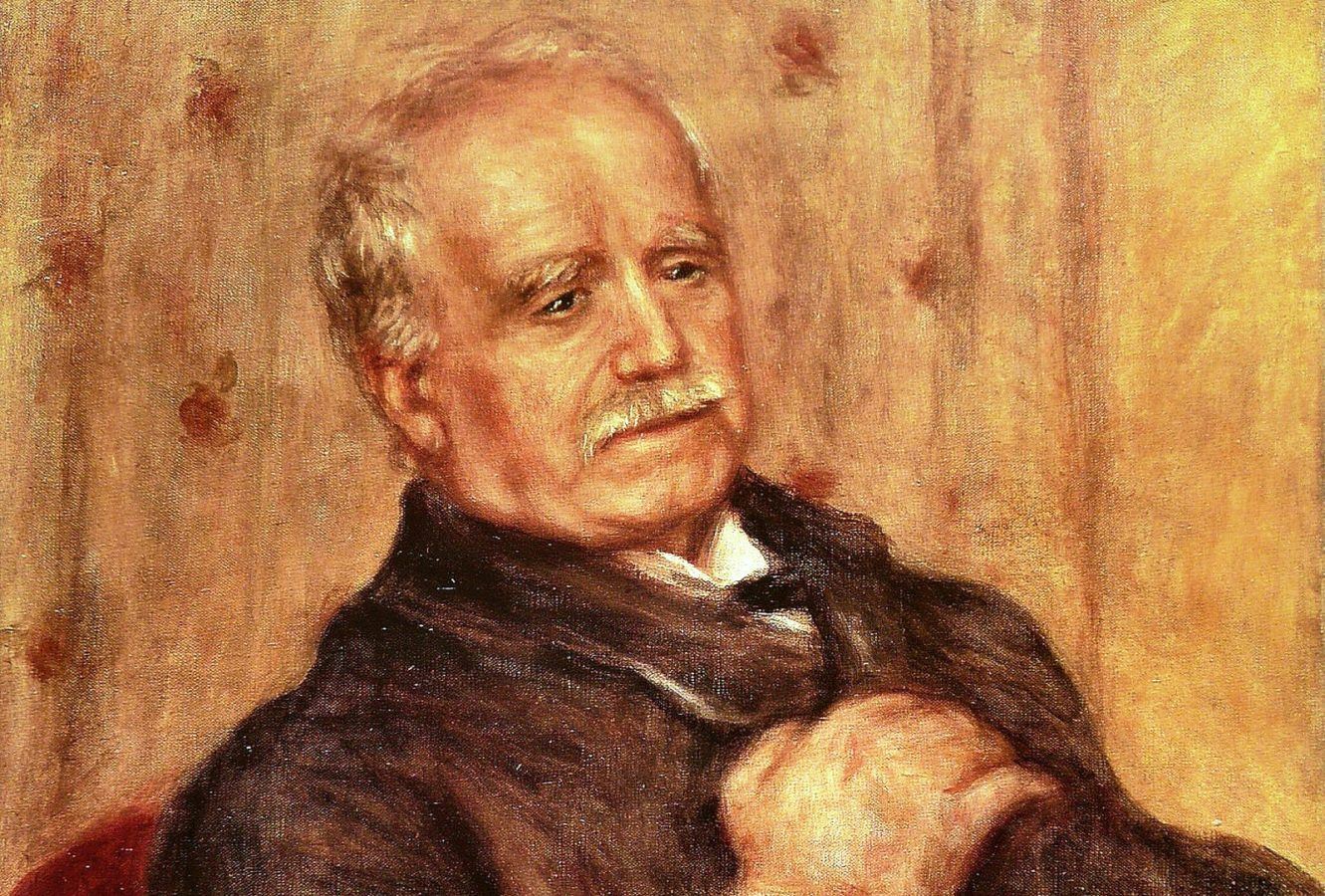
Near the end of the 19th century in Paris, France, a small group of rebellious artists violated the accepted academic and royal standards governing art at the time. Ultimately known as the Impressionists, this group was scorned, rejected and regarded with utter contempt by the academics and critics of the day. The group dared to paint with a new set of techniques and a light-infused style which was not confined to the established dictates of Realism, nor was it in line with Establishment thinking.
Today, Impressionism is arguably the most well-loved and well-known art in the world. A little less known is the fact that Impressionism almost never came to be. The masters of the Impressionism era, who are so modernly cherished, might have been unknown to this day without the labors of one man: an art dealer by the name of Paul Durand-Ruel.
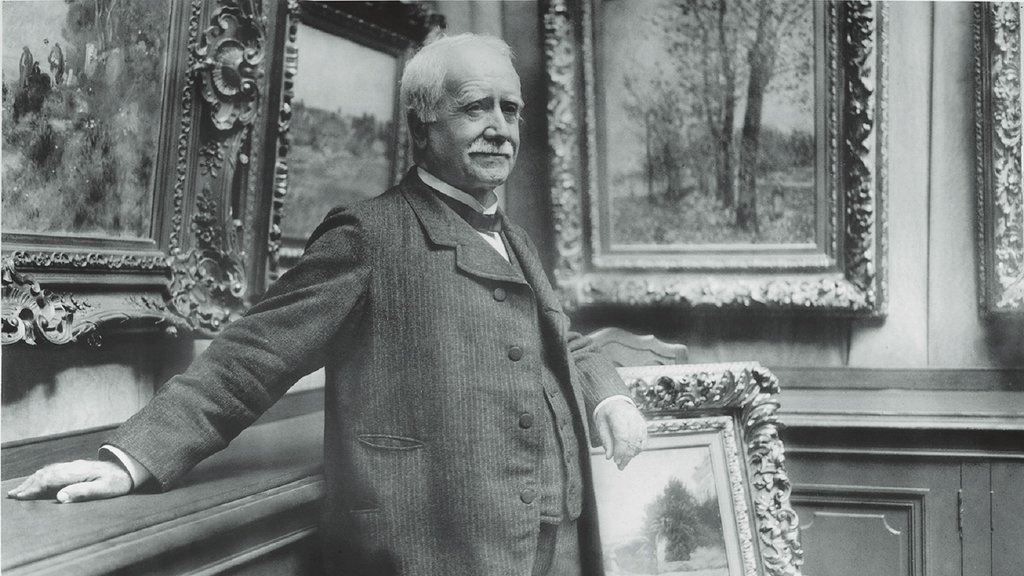
Taking over the family art business from his father and having fled to England during the Franco-Prussian war, Durand-Ruel met his fellow countrymen Monet and Pissarro while in England and began to collect their paintings. Later, upon his return to France, they introduced him to Degas, Sisley, Renoir and others. Thus began the cause that would become his life’s work.
At a time when there was no commercial demand for the work of the Impressionists, Durand-Ruel purchased the paintings of these starving artists in quantity, sometimes buying out entire studios and collections and providing great relief to them, offering them stipends, paying doctor’s bills and even offering a place for Monet to paint within his home. During the darkest of times Monet threatened to destroy his canvases to which Durand-Ruel replied, “Please don’t do that. I’ll send you money. Just send me the canvases in return. Don’t despair if you’re feeling like you’re in a rut artistically. I believe in you. Continue to paint and we’ll find a market.”
Flirting with bankruptcy nearly twenty times over the years, he continued to persist in his mission to promote these undiscovered masters. “All my efforts were thwarted by the violent campaign mounted against Manet, Monet, Renoir, Sisley, Degas and Puvis de Chavannes, and other artists I had the audacity to hang in my galleries,” he said.
It was over a decade after his first meeting with the Impressionists and after many failed exhibitions of their work in Europe, whereupon he loaded three hundred paintings aboard a sailing ship and headed for America. It was there he encountered a different kind of buyer unexposed to prejudice. “The Americans do not laugh,” said Durand-Ruel, “They buy.” Following in the footsteps of the more open-minded Americans, the French eventually began purchasing the Impressionists’ works, and the rest of Europe at last followed suit.
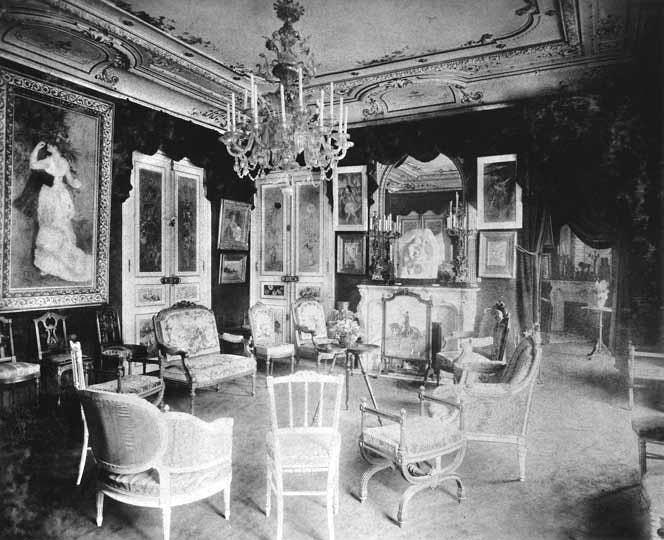 The grand salon at Rue de Rome with ‘Dance in the City’ by Renoir Photograph: Archives Durand-Ruel
The grand salon at Rue de Rome with ‘Dance in the City’ by Renoir Photograph: Archives Durand-Ruel
© Durand-Ruel & Cie.
In addition to the financial and emotional support he offered the artists he represented, Paul Durand-Ruel established a few innovative business principles that have influenced art galleries to this day: solo exhibitions promoting a singular artist, the strategic cornering of the market by buying out entire collections, and the creation of an international network of art galleries as a means for promotion.
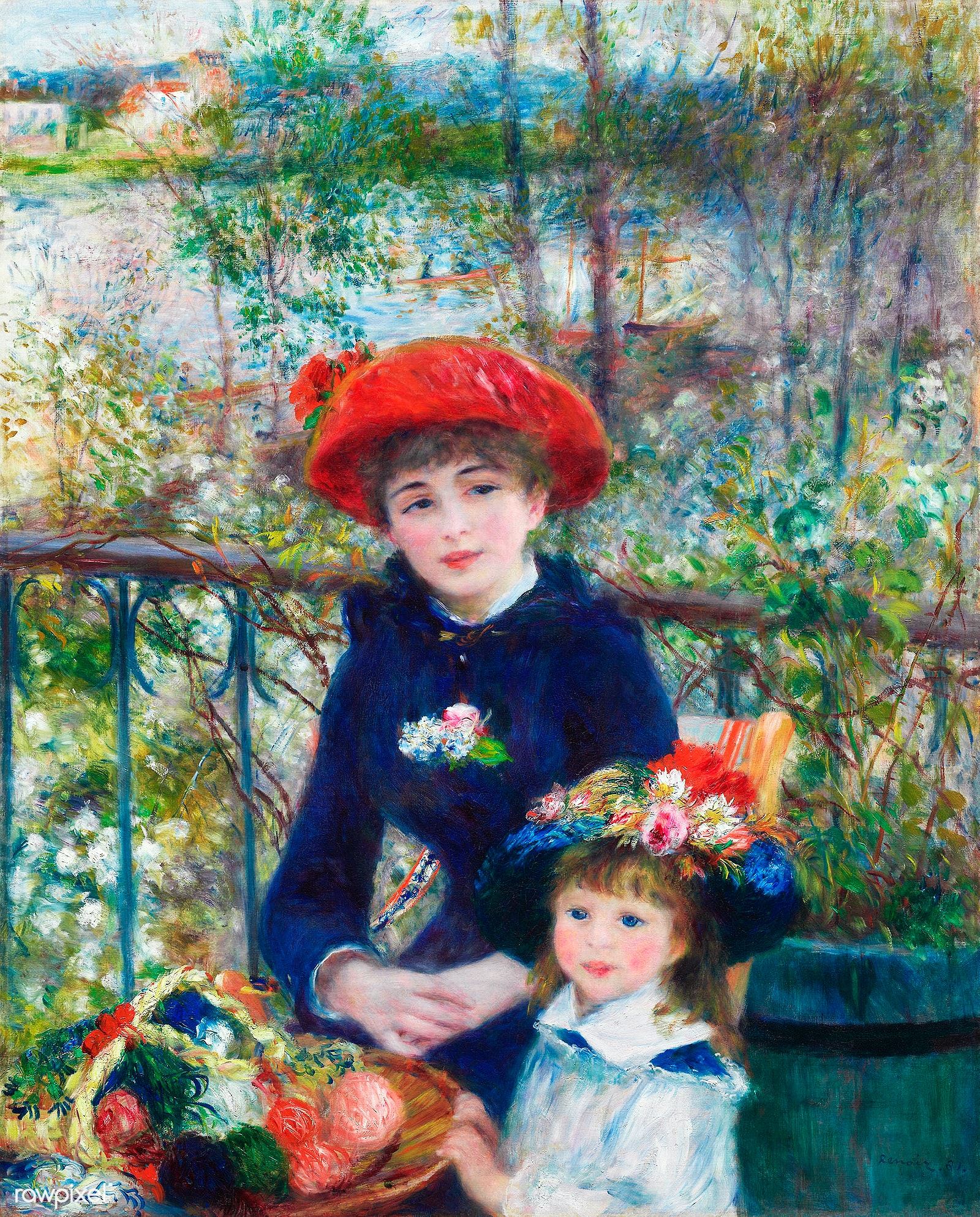 Two Sisters (On the Terrace) (1881) by Pierre-Auguste Renoir. Original from The Art Institute of Chicago.
Two Sisters (On the Terrace) (1881) by Pierre-Auguste Renoir. Original from The Art Institute of Chicago.
Digitally enhanced by rawpixel.
Before he passed away, a wealthy and successful man, in 1922 at the age of 89, Durand-Ruel said, “At last the Impressionist masters triumphed. My madness had been wisdom. To think that had I passed away at 60, I would have died debt-ridden and bankrupt, surrounded by a wealth of underrated treasure.”
Monet spoke gratefully of his friend and patron, “We would have died of hunger without Durand-Ruel, all we impressionists.” Renoir, after thirty years of friendship, immortalized the man by painting his portrait.
Most of the Impressionist masterpieces we enjoy in today’s museums and exhibitions once passed through the hands of Paul Durand-Ruel. We owe thanks to his foresight, persistence, courage and undying support of the arts.
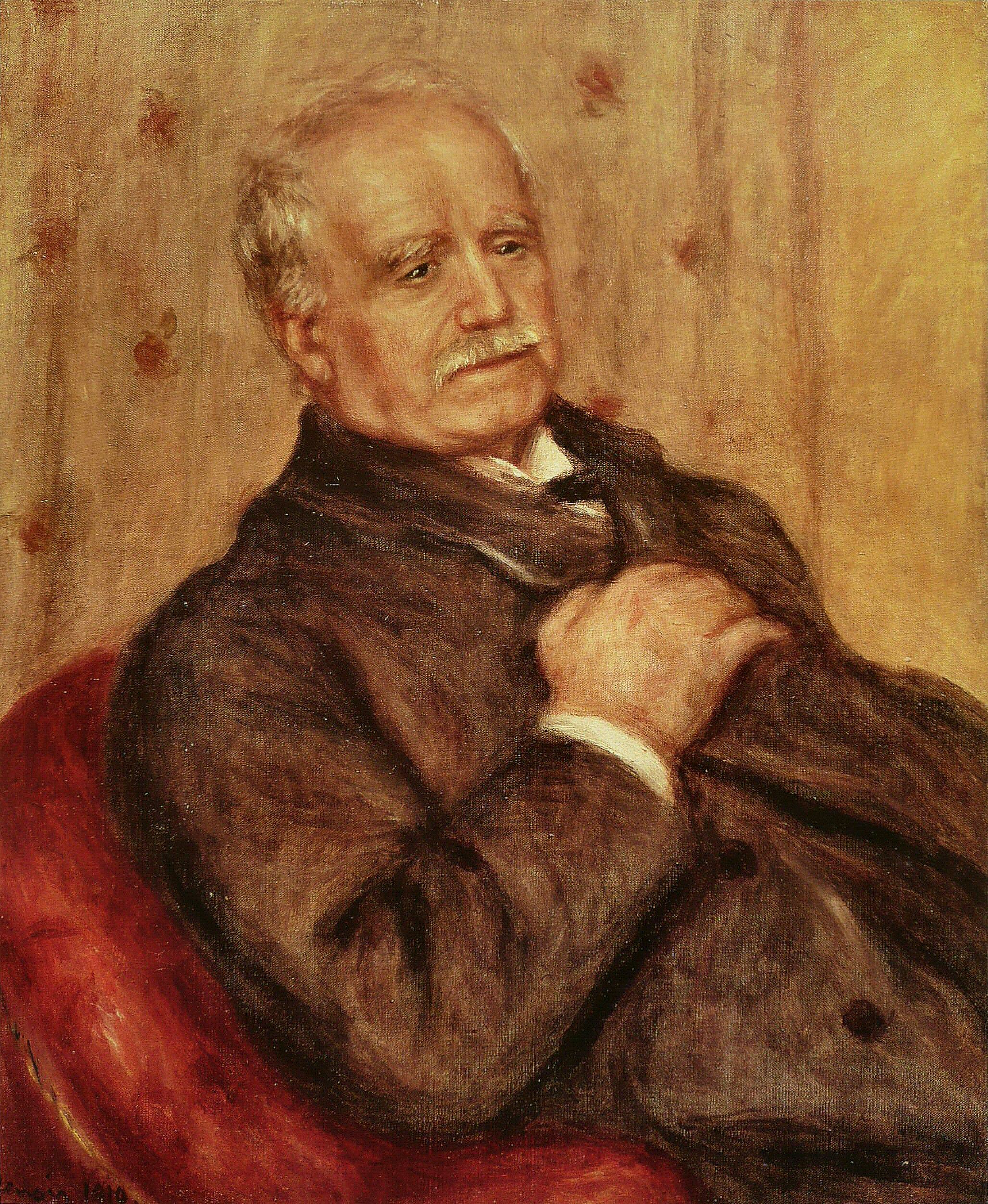 Pierre Auguste Renoir, Portrait of Paul Durand-Ruel, 1910
Pierre Auguste Renoir, Portrait of Paul Durand-Ruel, 1910
Discover the artist at the forefront of modern impressionism.
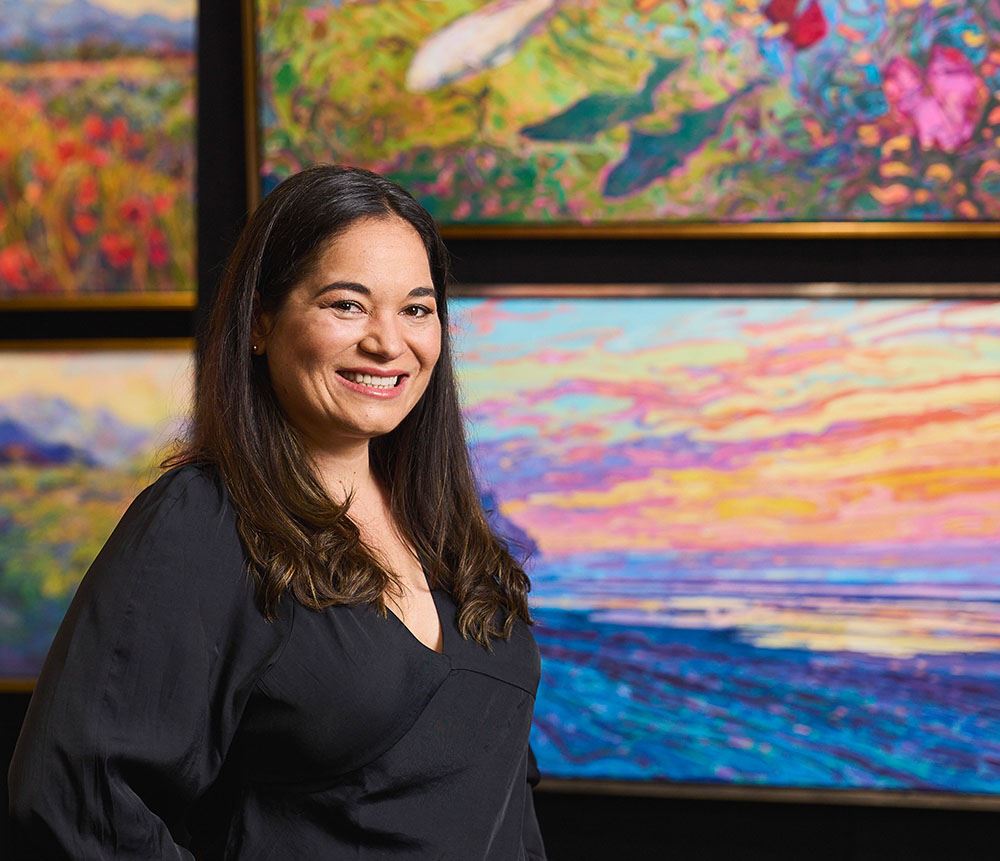
About Erin
ERIN HANSON has been painting in oils since she was 8 years old. As a teenager, she apprenticed at a mural studio where she worked on 40-foot-long paintings while selling art commissions on the side. After being told it was too hard to make a living as an artist, she got her degree in Bioengineering from UC Berkeley. Afterward, Erin became a rock climber at Red Rock Canyon, Nevada. Inspired by the colorful scenery she was climbing, she decided to return to her love of painting and create one new painting every week.
She has stuck to that decision, becoming one of the most prolific artists in history, with over 3,000 oil paintings sold to eager collectors. Erin Hanson’s style is known as "Open Impressionism" and is taught in art schools worldwide. With millions of followers, Hanson has become an iconic, driving force in the rebirth of impressionism, inspiring thousands of other artists to pick up the brush.